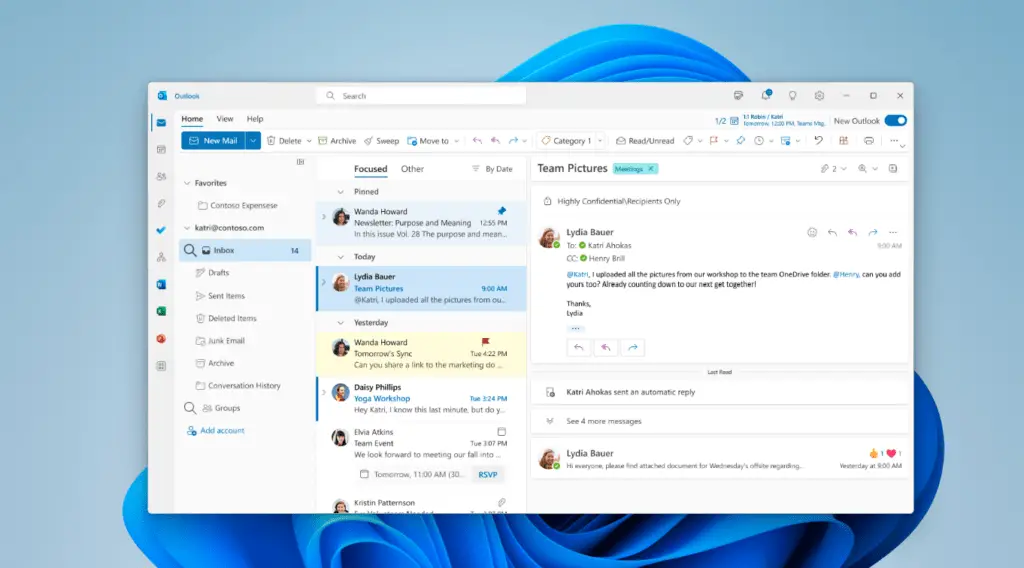A new version of Outlook will arrive in 2024
Microsoft, the software behemoth, recently proclaimed significant transformations impending for the productivity applications integrated within the Windows 11 operating system, including the introduction of an overhauled Outlook for Windows. This forthcoming iteration is slated to incorporate the latest functionalities within a modern, simplified design schema, enabling customization as per individual user preferences, and facilitating an expanded array of tasks with the new version.
Beginning in the year 2024, all new Windows 11 devices will come equipped with the revamped Outlook for Windows as the default email application, accessible to all at no cost. The original Mail and Calendar applications will persist in being available for download via the Microsoft Store until the conclusion of 2024. On existing devices, users will have the option to transition from the Mail and Calendar applications to the new Outlook for Windows.

For those eager to sample the preview version of the new Outlook for Windows, they may opt to select the ‘Try the New Outlook’ button situated at the top-right corner of the application, and proceed as guided. Users can revert to the previous version at any given moment by simply toggling the switch off, with the assurance that no data or emails will be lost.
Furthermore, subscribers to Microsoft 365 or Office 365 will have the opportunity to employ the new Outlook for Windows to gain access to some Microsoft 365 applications. Even those without a subscription can utilize the new Outlook for Windows via any personal email account.
It is understood that Microsoft’s software engineers are steering a project known as ‘Hudson Valley,’ rumoured to be the next major Windows iteration – ostensibly Windows 12, likely to be unveiled around September of the following year. This coincides with the projected timeline for the release of the new Outlook for Windows. The future web-based new client is anticipated to be built into Windows 12, setting it as the default email application.





